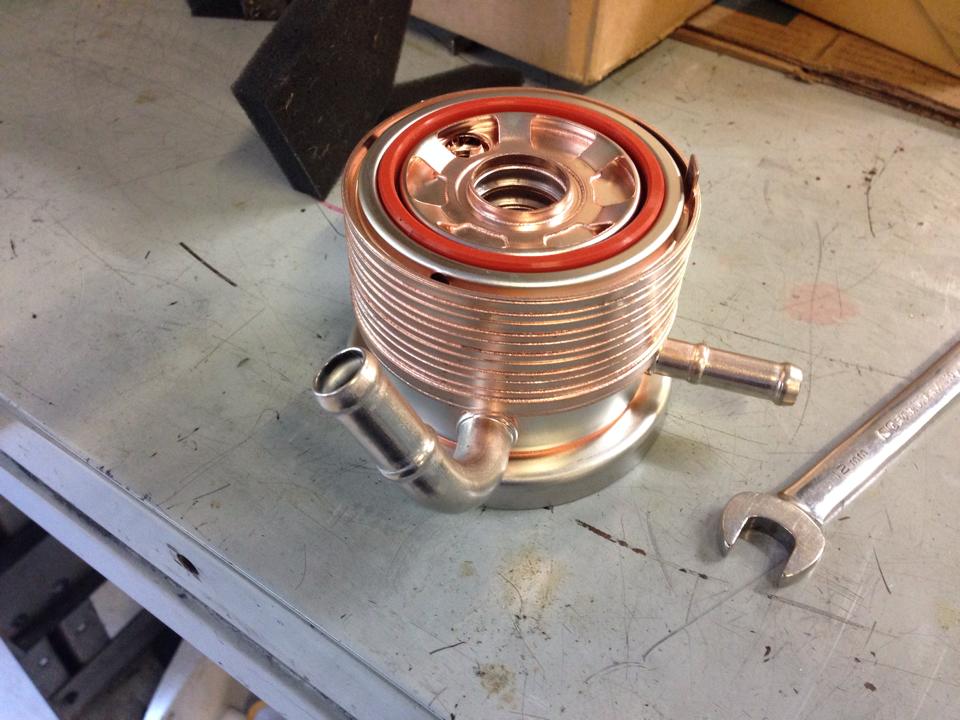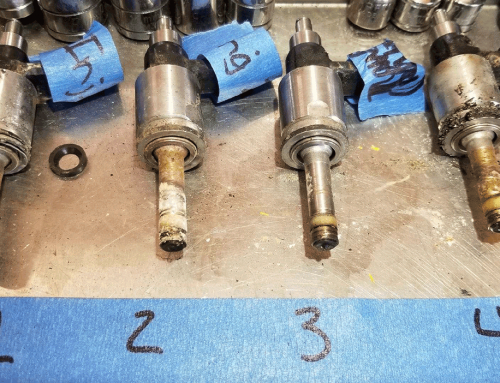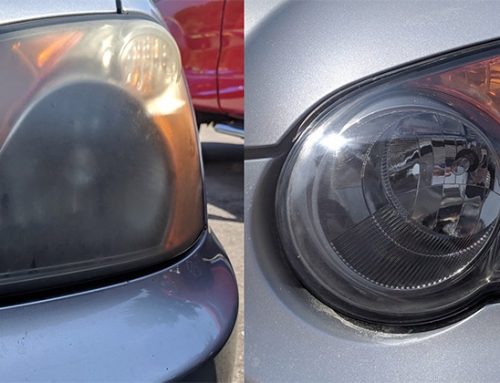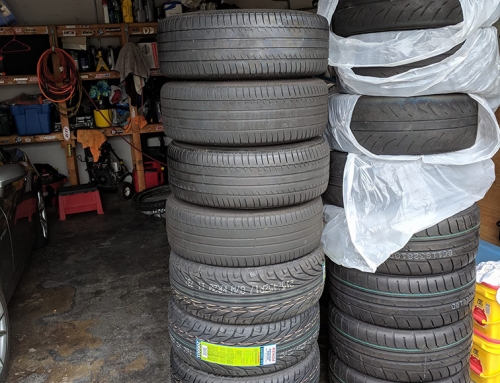Do you need an oil cooler?
First off, do you even need one? This is going to depend on how you’re driving the car and what you have done to the car. I’ll lump street and autocross together since I think you probably even get warmer oil just cruising down the highway at a steady 80 mph than you do from a set of autocross runs. N/A for this stuff, you’re fine. If you have forced induction you’ve got more power, and if you’ve got a turbo, that oil is absorbing heat from the turbo too. I’m skeptical it’s a real requirement at that point, but it’s certainly not a bad idea. Per this thread, a turbo car went from some highway pulls going from 220 F to 190 F and cruising going from 208 F to 183 F. Personally I don’t find any of these numbers concerning and actually think 183 is even low. You’d have to be doing something like canyon driving or driving so crazy I’m not sure how long you could even get away with it on the street to really get high numbers.
Track driving is a different beast, you’re generally putting 20+ minute sessions on your car with an average load of around 5500 rpm. Hard to simulate that on the street. Occasional tracking or totally new people may not be putting the hurt on the oil but frequent trackers and intermediate level people will be getting the oil to 270, 280, even 290+. I’m not that quick (a bit quicker now though!) and you can see my oil in this video track up to 275+. I’m coming on at 180, 10 minutes in 270.
What’s a good oil temperature? Weight? Oil Pressure?
Depends who is answering on the internet… I don’t know, other than I know it’s not 275 F. I’m under the impression from this and other threads at bobistheoilguy that nothing is particularly problematic with the oil itself until it starts getting to a rather high 300 degrees or so. That being said the oil is thinning out as it grows warmer and oil pressure is dropping. What should that be? That also doesn’t appear to have a very clear answer either, but it is generally said to be 1000s of rpms + 1 * 10. So at 5000 rpms it would be (5 1000s + 1) * 10 = 60 psi. It can drop a lot once warm.
The 86 platform advises 0w20 which I generally think is fine for a street driven car and ideal for the winter. It advises 5w30 if the car is being pushed harder. I’m currently on 10w30 for a summer driven car but once I run out plan on changing to 5w30. I use Amsoil synthetic and the only other data points I have to compare it to are savagegeese‘s supercharged car with an air/oil cooler. Some things to note here – one vendor’s 10w30 is not another vendors 10w30; I have oil temp measurements in both a sandwich plate and my OBD2 AiM Solo DL data and oil pressure from a sandwich plate. The temp on the gauge appears to read a little high. SG’s pressure gauge is plugged into the oil galley near the throttle body.
Some of his results of note:
TRACK TEMPS AFTER 9 LAPS @ 1 Minute 15 Seconds Per Lap
10w30 Redline 245F @ 4000RPM 52PSI Oil Pressure
10w30 Redline 245F @ 7000RPM 46PSI Oil Pressure
10w40 Redline 265F @ 4000RPM 55PSI Oil Pressure
10w40 Redline 265F @ 7000RPM 45PSI Oil Pressure
Comparing pressure, I know it’s rather tough to see here but my gauge is at 60 psi here. This is with Amsoil 10w30, OBD2 data said max 251, temp gauge read more like 260. 103 mph so 7000 rpm, you can see my shift light flashing.

Air/Oil vs. Water/Oil?
There are pluses and minuses about both these style kits.

Air/Oil Cooler – you can roll your own or buy one of the many options – you have a lot of options and flexibility here, however it’s far more expensive of an option. The actual cooling unit alone is going to cost you as much if not more than the entire Forester OEM setup. However you have a lot of control over what you put in there and over your capacity to dissipate heat. I have yet to see boosted track car data with the Forester setup (please let me know if you have some!) and at the moment speculate the air/oil style intercooler may simply be required. Aside from price, the negatives here are that you have to run new oil lines now. You’ll also be filling up the car with a bit more oil, and oil that won’t be drained out during a change; although with a smaller cooler this is a negligible amount. While your oil pressure should benefit from being lower, having to pump oil through this cooler also actually costs you oil pressure; the oil has a longer distance to travel and now there is more restriction. The other downsides of this kit are now it takes even longer for your oil to warm up – especially if you are driving the car, and moving air through the cooler. One of the things I was surprised to see after installing my gauges was just how long the oil took to actually come up to 180 F operating temperature. It makes me think many autocrossers may not even be up to temp by the time they get their first run, it’s surprising. This is particularly problematic for winter driven cars. You are probably going to want an oil valve thermostat to help out with this problem to control when oil flows through the cooler, and for a winter driven car, may consider closing it off entirely for the winter or blocking the oil cooler with a piece of cardboard or something.

Water/Oil Cooler – this is the style where rather than oil being brought out to a cooler and cooled by air, we instead bring coolant up to a housing and run both oil and coolant through it, exchanging heat from the hot liquid to the cool liquid. Why don’t I say from oil to coolant? When you start up the car, the coolant is actually warming up more quickly. So a nice benefit here is that it is also warming up the oil in this exchanger, so the oil raises to operating temperature more quickly. A great benefit, especially in the winter. This kit is also a ton cheaper. However, it does not perform as well as an air/oil cooler under extremes. I think it’s doing great for me on a N/A track driven car, although am less sure what the world would look like with something that had near 300 whp. This approach also adds heat to the radiator, although the OEM one has sufficient capacity to expel it. I did however install a Koyo radiator at this time.
Install
There’s a fantastic parts list and install thread for the Forester XT OEM Cooler on FT86. Some people have plumbed it differently to get coolant from the throttle body – which we’ll see appears to be the better way to go.
Street Results
This is me just cruising down the highway, in 6th, 3500 rpm. 220 F and 60 psi with Amsoil 10w30.
Track Results
Four 86s on the same day:
| Car | Oil Cooler | Radiator | Liquid |
|---|---|---|---|
| Mike | Forester | Koyo | Coolant |
| Stefan | Forester TB | OEM | Water |
| Marcel | Jackson Racing | OEM | Water |
| Adam | None | OEM | Coolant |

Although Stefan is driving his car harder, his oil is cooler than mine. If you install this cooler, get your coolant from the throttle body. His coolant is doing great. Despite my coolant being lower, his oil temperature is still lower. I’m curious what the combination of the Koyo and plumbing through the throttle body would look like. Marcel has an air/oil cooler and as expected, his oil is doing the best – those are fantastic track temperatures. Adam has no extra oil load yet his coolant matches Stefan’s – this makes me wonder whether Stefan’s coolant is higher because of the oil or because of something else. Adam’s oil temps are similar to mine, although as his lap speed picks up, some style oil cooler should be on his list to add to the car.







So does the oem oil cooler work in FI application
i think it works but the question is how well do you need it to… a turbo will add more heat than a supercharger, and a track session will be more heat than messing around on the street. personally if i had no cooler and installed FI, i’d do an air/oil cooler with it rather than the forester oem one, particularly because i track it.
if i already had a forester one, street drove it, then added FI later i’d probably just observe my temps with it first to see how it behaved before upgrading to an air/oil cooler.
I appreciate the write up, you did a great job of cleaning up the info that was floating around regarding the two OEM+ routes. I’m probably going to go with the throttle body route and add a secondary air/oil cooler if I observe a necessity to do so.
So did you record your oil pressure when hot on the track prior to installing a cooler?
According to one section you had 60PSI at 260f. That still seems reasonable to me.
i have in aim solo dl data and an older video where i climb up to 279. gets hot! that’s with me running slower times as well.
Hi Mike,
If I interpret the track results correctly :
– the Forester oil cooler when routed your way, actually did nothing to cool the engine oil
– the Forester oil cooler when routed from TB, brought track oil temps down by roughly 7 degrees
Not sure if you’ve any further updates, but would it be accurate to conclude that the Forester oil cooler works fine for street and autocross applications but is insufficient for track use?
not exactly; those weren’t even particularly fast laps in the video session i posted above of myself, with the oil temperature rising for the whole session. 270, 275, i’ve hit 279 without the cooler; usually with it i’m at 250-255 most often. the most demanding track around here might peak at 260-265 though. the plumbing through the throttle body just appears to work better.
more demanding tracks or a more demanding driver might not find it enough; with my driving and my local tracks though i think it’s getting the job done well enough.
Hey Mike,
I’m a little late to the party I know. what was the ambient temp when you did this test? the reason I ask is I live about an hour away from Willow Springs and 30 miles away from death valley we see ambient temps of as high as 120f during the summers and nearly freezing in the winters. trying to figure out the appropriate route for my oil cooling needs. I’m NA stock power and drive it hard pretty frequently, until now i havent even considered needing a heavier oil but have seen temps above 270. id like to run the forester cooler if i can be certain it’ll keep my temps in check on those hot days. any opinion on this?
cheers
hi, i don’t recall ambient temp – certainly nothing near 120 though. likely all these days were under 100.